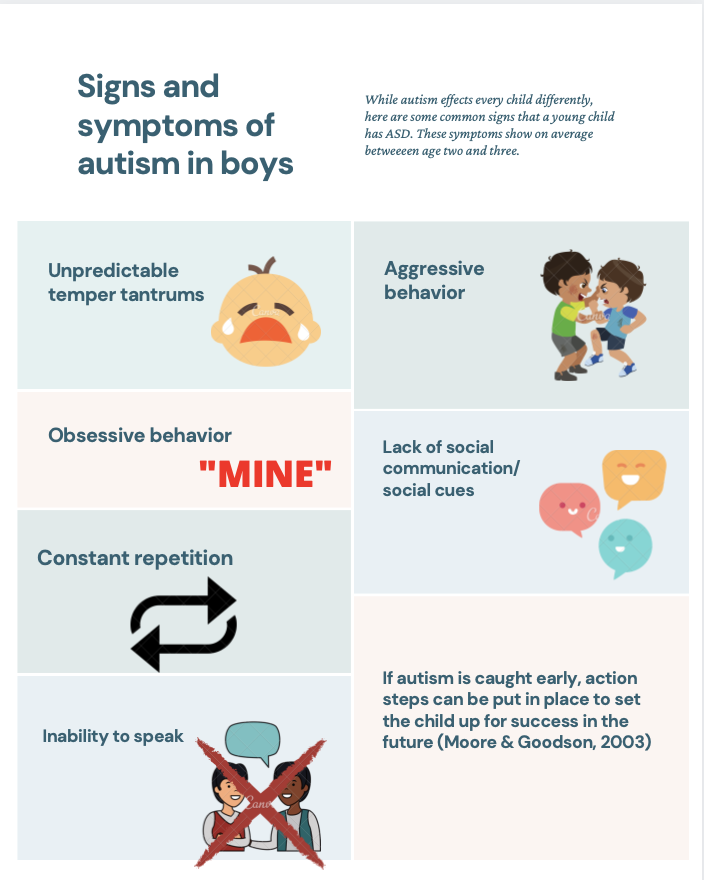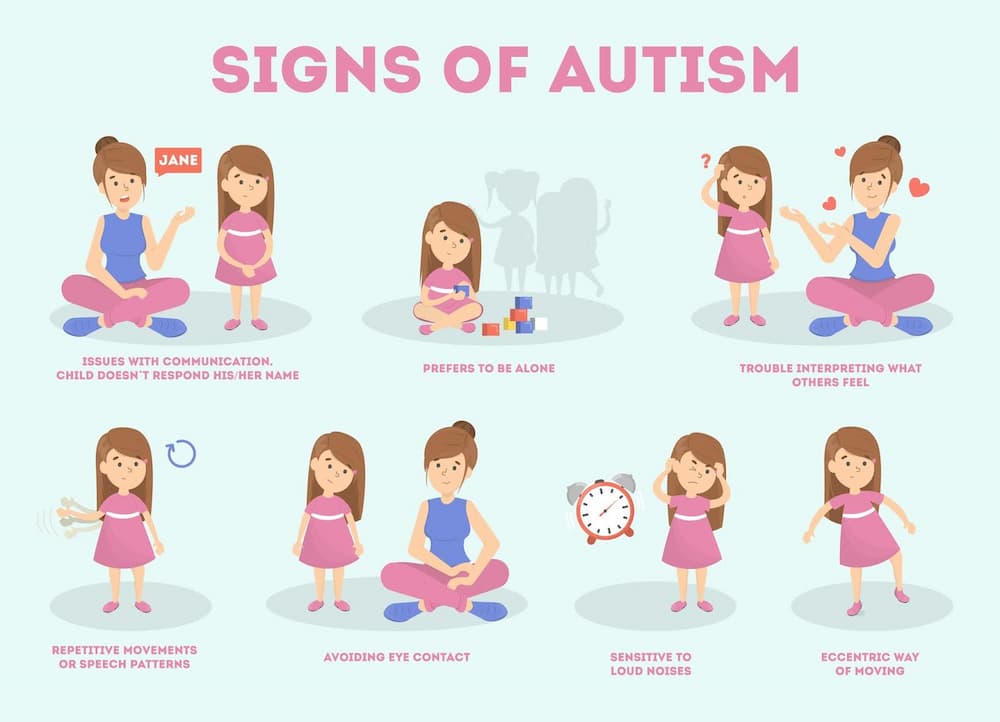Developing strong social bonds with help from an Autism Therapist
Developing strong social bonds with help from an Autism Therapist
Blog Article
Comprehending the Impact of Behavioral Autism on Day-to-day Live and Social Communications
You might not realize exactly how deeply behavior autism influences daily life and social interactions. Individuals on the range commonly browse a globe loaded with communication hurdles and sensory overload. These challenges can bring about stress and seclusion, impacting their connections and general health. Understanding these subtleties is vital for promoting encouraging environments. What approaches can we implement to create even more comprehensive rooms and purposeful links? The solutions might surprise you.
Defining Behavior Autism and Its Features
Behavioral autism, commonly described as autism spectrum problem (ASD), includes a series of problems defined by challenges in social communication, communication, and repetitive actions. You may notice that individuals with ASD frequently battle to translate social cues, which can bring about misunderstandings in discussions. They may find it difficult to establish eye call or participate in tiny talk, making social circumstances really feel overwhelming.
Communication troubles can manifest in different methods, from postponed speech growth to a choice for using fewer words. Repetitive habits, such as hand-flapping or shaking, can serve as coping devices to manage anxiety or sensory overload. These qualities can greatly impact day-to-day live, making it essential for you to recognize and support those with ASD. By acknowledging these traits, you can promote a setting that advertises approval and encourages efficient interaction, aiding individuals with autism prosper in their day-to-day communications.
The Range of Autism: Understanding Irregularity in Behavior
Autism spectrum problem (ASD) isn't a one-size-fits-all medical diagnosis; it differs extensively amongst people. You may see that some people with ASD display mild signs, while others may deal with much more substantial obstacles. This irregularity can show up in actions, passions, and sensory level of sensitivities. You may come across individuals who are highly spoken and involve conveniently in discussions, while others could prefer solitary activities or interact non-verbally.
Furthermore, the means individuals with ASD react to sensory input can vary considerably; some may be overwhelmed by loud noises or brilliant lights, whereas others grow in promoting atmospheres. The range additionally includes differences in social communications; some people may struggle to analyze social cues, while others navigate social setups with family member ease. Recognizing this variability is important, as it aids you appreciate each individual's distinct experience and dressmaker assistance to their particular demands, promoting an extra comprehensive setting for everybody.
Interaction Obstacles Faced by People With Autism
When you interact with individuals on the autism range, you might notice their special interaction challenges. They frequently deal with difficulties with both nonverbal and spoken cues, which can impact their social communications. Recognizing these barriers is necessary for cultivating better connections and support.

Verbal Communication Troubles
Several people on the autism spectrum experience verbal interaction problems that can significantly affect their daily communications. You could find it challenging to share your thoughts, feelings, or needs plainly. This can cause disappointment for both you and those around you, as misunderstandings occur. You might have problem with launching discussions, preserving a subject, or comprehending subtleties in speech. Usually, you may prefer making use of easy language or repetitive phrases, which can limit your capacity to engage in deeper conversations. Your tone, volume, or pace may not straighten with social expectations, triggering others to misunderstand your objectives. Identifying these challenges can assist you and your assistance network establish strategies to enhance interaction and foster much better links with others in your day-to-day life.
Nonverbal Communication Barriers
Verbal communication isn't the only obstacle people on the autism range face; nonverbal communication barriers can be equally as substantial. You could locate it difficult to interpret body movement, faces, and eye call, which are important for effective communication. These obstacles can result in misunderstandings or misconceptions of social signs, making communications feel confusing or frustrating. You may have a hard time to express your very own feelings through nonverbal methods, leaving others unsure of your sensations or purposes. This detach can create sensations of isolation and disappointment. Acknowledging these barriers is critical for promoting understanding and empathy in your communications. By attending to nonverbal communication, you can locate techniques to improve your social experiences and boost your overall high quality of life.
Social Interaction Impacts
Social interactions can commonly feel frustrating because of the distinct interaction obstacles encountered by people with autism. You could fight with analyzing social cues, making it hard to comprehend mockery or body movement. This can lead to misunderstandings or uncomfortable minutes in discussions. Additionally, starting and preserving discussions may really feel tough, causing stress and anxiety in social scenarios. You may like organized settings, making spontaneous interactions unpleasant. It's likewise typical to experience problem in involving in small talk, which can hinder forming new friendships. Identifying these obstacles can help you find methods to enhance communication, such as practicing social skills in safe settings or using visual help - Autism Spectrum Therapies. Comprehending your requirements permits you to navigate social interactions with greater confidence and ease.
Social Interaction and Relationship Structure in Autism
While structure relationships can be testing for individuals with autism, recognizing their one-of-a-kind point of views and communication styles can cultivate meaningful links. You might notice that several people on the range prefer direct communication and may struggle with social cues or tiny talk. By being simple in your communications, you can help develop an environment where they really feel comfy.
Involving in shared interests can likewise offer as a bridge to much deeper links. Whether it's a hobby, a favored program, or a mutual passion, these typical strings can open up doors to relationship.
Daily Life Routine: Browsing Obstacles and Techniques
Navigating day-to-day life routines can be particularly testing for individuals check my source with autism, especially when unanticipated adjustments take place. To navigate these obstacles, think about implementing aesthetic schedules or lists.
Establishing a regimen that includes sensory breaks can likewise be valuable. This helps develop an understanding setting.
Finally, technique mindfulness methods to handle anxiety and stress and anxiety. Simple breathing workouts or grounding methods can make a significant distinction. By integrating these strategies, you can improve your day-to-day routine and reduce disturbances, making life really feel more manageable.
Staminas and Capabilities of People on the Autism Range
Understanding every day life regimens is simply one facet of the autism experience. Numerous individuals on the autism range possess exceptional toughness and capacities that establish them apart. You could find that your attention to detail is exceptional, allowing you to master tasks that require precision and focus. Your capacity to assume outside package can bring about innovative solutions in various situations.
In addition, your memory abilities usually beam, specifically in locations of rate of interest. Autism Behavioral Therapy. This propensity for maintaining info can make you an important resource in areas like innovation, art, or science. You might also show solid visual reasoning, allowing you to visualize intricate ideas and resolve problems creatively
In addition, your one-of-a-kind perspective on the globe can promote empathy and understanding in others, improving social communications. Embracing these toughness not only boosts your self-confidence however also aids click to read others appreciate the diverse abilities you give the table.
Developing Inclusive Atmospheres for Individuals With Autism
Creating comprehensive settings for individuals with autism begins with developing sensory-friendly rooms that satisfy their unique demands. You can also cultivate opportunities for social communication, helping to construct connections and relationships. By making these adjustments, you'll add to a more inviting ambience for everybody.
Designing Sensory-Friendly Spaces
While designing sensory-friendly YOURURL.com rooms, it's vital to assess the special needs of individuals with autism. Beginning by choosing soothing shades and soft lights to create a calming setting. Incorporate quiet zones where individuals can pull away and recharge when bewildered. You'll wish to reduce loud noises and interruptions, using soundproof materials or white noise makers to aid keep peace. Consider tactile elements like soft fabrics or fidget-friendly objects that can offer comfort. Identify that rooms are flexible, permitting easy reformation to accommodate various tasks. Lastly, consist of visual routines or clear signage to help individuals navigate the area with confidence. By thoughtfully incorporating these aspects, you can produce a welcoming ambience that supports sensory needs and promotes overall wellness.
Promoting Social Interaction Opportunities
Creating sensory-friendly rooms not just addresses specific convenience however additionally sets the phase for meaningful social communications among individuals with autism. To advertise these interactions, develop comprehensive settings that welcome involvement. Arrange structured tasks, like art courses or team games, that motivate partnership without frustrating sensory input. Use visual aids and clear interaction to help everyone engage easily. Motivate peer mentoring, matching people with autism with helpful peers who can direct them via social scenarios. Additionally, consider hosting routine area occasions that celebrate neurodiversity, promoting acceptance and understanding among all individuals. By applying these methods, you can enhance social opportunities, aiding individuals with autism develop friendships and reinforce their social skills in a secure, inviting atmosphere.

Regularly Asked Questions
How Can Friends Support A Person With Behavioral Autism?
You can sustain a friend with behavior autism by holding your horses, paying attention actively, and respecting their limits. Participate in activities they delight in, interact openly, and develop a comfy atmosphere where they feel valued and understood.
What Resources Are Available for Parents of Kid With Autism?
You can discover different resources for moms and dads of children with autism, consisting of support groups, instructional sites, and regional neighborhood services. Linking with various other moms and dads can also provide valuable insights and shared experiences to aid browse challenges.
Can Behavioral Autism Adjustment In Time?

Yes, behavioral autism can alter gradually. You could discover changes in interaction, social skills, and habits as your youngster grows. Early intervention and support frequently play crucial duties in these developmental modifications.
Just How Do Sensory Sensitivities Impact Day-to-day Live?
Sensory sensitivities can make everyday experiences overwhelming. You may battle with brilliant lights or loud noises, causing stress or avoidance. Finding environments that accommodate your requirements can substantially boost your comfort and overall every day life.
What Are Typical Misconceptions Concerning Behavioral Autism?
You might think behavioral autism only affects communication skills, however it's even more facility. Many assume individuals lack empathy or intelligence, which isn't real. Comprehending these misconceptions helps foster approval and assistance for those on the range.
Behavior autism, often referred to as autism spectrum problem (ASD), incorporates an array of problems defined by difficulties in social interaction, communication, and repetitive actions.Social communications can usually really feel frustrating due to the one-of-a-kind interaction obstacles encountered by people with autism.Creating sensory-friendly areas not just addresses individual convenience but likewise establishes the stage for significant social interactions among people with autism. Encourage peer mentoring, pairing people with autism with helpful peers who can guide them via social circumstances. By carrying out these methods, you can improve social opportunities, aiding individuals with autism build relationships and enhance their social abilities in a secure, welcoming setting.
Report this page